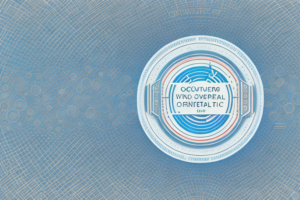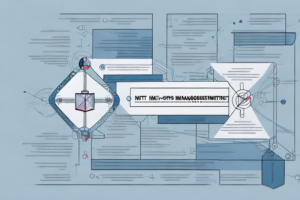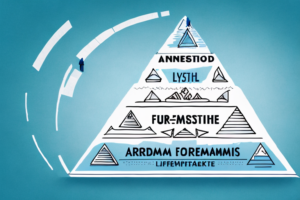What is risk management framework (RMF)?
7 min read
A complex network of interconnected shapes and lines representing a risk management framework
In today’s fast-paced business world, managing risks has become increasingly complex and challenging. Therefore, risk management has become an essential part of every organization’s strategic plan. Risk management framework (RMF) is a structured approach that helps organizations proactively identify, assess, monitor, and mitigate risks effectively and efficiently. It provides a holistic, systematic, and integrated approach to managing risks across an organization. In this article, we will delve into the details of risk management framework, its importance, evolution, core components, implementation, benefits, and challenges. We will also discuss key considerations, best practices, case studies, and future trends in risk management framework.
Understanding the importance of risk management
Risk management is critical to the success of any organization, regardless of size, industry, or location. It helps organizations to anticipate, prevent, and respond to potential risks, threats, and uncertainties that can adversely affect their objectives, assets, reputation, and financial performance. Risk management framework provides a framework for addressing risks in a systematic and integrated way, enabling organizations to identify, assess, prioritize, and mitigate risks effectively and efficiently. Moreover, it helps organizations to comply with regulatory requirements, improve decision-making, enhance stakeholder confidence, and foster a risk-aware culture.
Effective risk management involves a continuous process of monitoring, evaluating, and adapting to changing circumstances and emerging risks. It requires a collaborative effort from all levels of the organization, including senior management, employees, and stakeholders. By implementing a robust risk management program, organizations can not only minimize potential losses and damages but also seize opportunities for growth and innovation. In today’s dynamic and unpredictable business environment, risk management is not an option but a necessity for sustainable success.
The evolution of risk management framework (RMF)
The concept of risk management has been around for centuries, but the modern-day approach to risk management framework can be traced back to the US National Institute of Standards and Technology (NIST), which developed a risk management framework in 2004. Since then, RMF has evolved to become a widely accepted and recognized approach to managing risks in both the public and private sectors. Various frameworks and standards have emerged over the years, such as ISO 31000, COBIT, COSO, and FAIR, each of which provides different perspectives and methodologies for managing risks.
One of the key drivers of the evolution of RMF has been the increasing complexity and interconnectedness of modern-day systems and networks. As organizations have become more reliant on technology and digital systems, the potential risks and threats have also increased. This has led to the development of more sophisticated risk management frameworks that can address these complex and dynamic environments.
Another important factor that has influenced the evolution of RMF is the changing regulatory landscape. Governments and regulatory bodies around the world have recognized the importance of effective risk management in ensuring the stability and security of critical systems and infrastructure. As a result, they have introduced new regulations and guidelines that require organizations to implement robust risk management frameworks and processes.
The core components of RMF
Risk management framework consists of several core components that form a continuous and iterative process. These components include:
- 1. Categorize: Identify and group assets, services, and processes into categories based on their sensitivity and criticality.
- 2. Select: Choose the appropriate controls and safeguards to protect against identified risks based on the categorization.
- 3. Implement: Implement the selected controls and safeguards in a structured and consistent manner.
- 4. Assess: Evaluate the effectiveness of the implemented controls and safeguards in mitigating risks.
- 5. Authorize: Obtain management approval of the risk management plan and the residual risks.
- 6. Monitor: Monitor the status of the implemented controls and safeguards and continuously reassess the risks.
Effective risk management is critical for organizations to protect their assets, reputation, and customers. RMF provides a structured approach to identify, assess, and mitigate risks. It helps organizations to comply with regulatory requirements and industry standards.
RMF is not a one-time process, but a continuous and iterative process. It requires ongoing monitoring and reassessment of risks and controls. Organizations need to adapt to changing threats and vulnerabilities and update their risk management plan accordingly.
How to implement RMF in your organization
Implementing RMF in your organization requires careful planning, execution, and monitoring. It involves several steps, such as:
- 1. Identify the scope of the risk management framework and the stakeholders involved.
- 2. Establish risk management policies, procedures, and guidelines that align with the organization’s objectives, culture, and values.
- 3. Identify and assess the risks using a structured, systematic, and quantitative approach.
- 4. Develop a risk management plan that outlines the risk mitigation strategies, controls, and safeguards.
- 5. Implement the risk management plan in a consistent and integrated manner.
- 6. Monitor and reassess the risks and the effectiveness of the implemented controls and safeguards regularly.
- 7. Continuously improve the risk management framework based on feedback, lessons learned, and emerging risks.
It is important to note that implementing RMF is not a one-time event, but rather an ongoing process that requires continuous attention and improvement. It is crucial to involve all stakeholders in the risk management process, including employees, customers, partners, and suppliers. By doing so, you can ensure that everyone is aware of the risks and their responsibilities in managing them. Additionally, it is essential to stay up-to-date with the latest industry standards, regulations, and best practices to ensure that your risk management framework remains effective and relevant.
The benefits of adopting a risk management framework
Adopting a risk management framework can provide a range of benefits to organizations, such as:
- 1. Increased organizational resilience and ability to adapt to change and uncertainty.
- 2. Enhanced compliance with regulatory requirements and industry standards.
- 3. Improved decision-making based on evidence-based risk assessments.
- 4. Enhanced stakeholder confidence and trust.
- 5. Reduced costs and losses associated with risks and incidents.
- 6. Improved resource allocation and prioritization based on risk levels.
Common challenges faced during RMF implementation
Implementing risk management framework can be challenging due to various reasons, such as:
- 1. Lack of senior management support and commitment.
- 2. Limited resources and budget for risk management activities.
- 3. Resistance to change and cultural barriers.
- 4. Inadequate risk management skills and knowledge.
- 5. Complex and evolving regulatory and legal requirements.
- 6. Lack of standardization and consistency in risk management practices.
Key considerations when choosing an RMF model
Choosing the right risk management framework model for your organization requires careful consideration of several factors, such as:
- 1. Alignment with the organization’s goals, objectives, and values.
- 2. Ability to integrate with existing compliance frameworks and standards.
- 3. Scalability and adaptability to changing risk environments.
- 4. Availability of tools, resources, and support for implementation and management.
- 5. Ease of use, transparency, and stakeholder engagement.
Best practices for effective risk management using RMF
To ensure effective risk management using RMF, organizations should follow some best practices, such as:
- 1. Establish a risk-aware culture that fosters open communication and collaboration.
- 2. Conduct regular risk assessments using a structured and quantitative approach.
- 3. Implement controls and safeguards based on the risk assessment results and the organization’s risk appetite.
- 4. Monitor and reassess the risks and the effectiveness of the implemented controls and safeguards regularly.
- 5. Continuously improve the risk management framework based on feedback, lessons learned, and emerging risks.
Integrating RMF with other compliance frameworks
Risk management framework can be integrated with other compliance frameworks, such as ISO 9001, ISO 27001, PCI DSS, and HIPAA, to provide a comprehensive and integrated approach to managing risks and compliance. Integration can help organizations to identify and leverage synergies and avoid duplication of efforts and resources. It can also provide a holistic and consistent view of risks and compliance obligations, enabling better decision-making and resource allocation.
Case studies: Successful implementation of RMF in various industries
Several case studies demonstrate how organizations have successfully implemented risk management framework in various industries, such as:
- 1. US Department of Defense: Successfully implemented NIST RMF to manage risks in a complex and dynamic IT environment.
- 2. Aon: Implemented ISO 31000-based RMF to manage risks and improve decision-making in a global insurance brokerage firm.
- 3. National Australia Bank: Implemented COSO-based RMF to manage risks and compliance in a large financial institution.
- 4. Airbnb: Implemented FAIR-based RMF to manage risks and compliance in a rapidly growing online hospitality marketplace.
Future trends in risk management framework
Risk management framework is expected to evolve and expand in the future due to several trends, such as:
- 1. Increased focus on emerging risks, such as cybersecurity, climate change, and social responsibility.
- 2. Integration with emerging technologies, such as artificial intelligence, machine learning, and blockchain.
- 3. Recognition of risk management as a strategic and value-adding function.
- 4. Greater collaboration and sharing of risk information and best practices across industries and regions.
Frequently asked questions about RMF
Some frequently asked questions (FAQs) about risk management framework include:
- 1. What is RMF?
- 2. Why is RMF important?
- 3. What are the core components of RMF?
- 4. How do I implement RMF in my organization?
- 5. What are the benefits of adopting RMF?
- 6. What are the common challenges faced during RMF implementation?
- 7. Which RMF model is suitable for my organization?
- 8. What are the best practices for effective risk management using RMF?
- 9. How can I integrate RMF with other compliance frameworks?
- 10. What are the future trends in risk management framework?
Conclusion: Why every organization needs a robust risk management framework
Risk management framework is an essential tool for every organization that wishes to thrive in today’s unpredictable and fast-changing business environment. It provides a structured, systematic, and integrated approach to managing risks across an organization, enabling effective and efficient risk management and compliance. Implementing RMF requires careful planning, execution, and monitoring, as well as stakeholder engagement and support. By following the core components and best practices of RMF, organizations can improve decision-making, enhance stakeholder confidence, and safeguard their reputation, assets, and financial performance.



